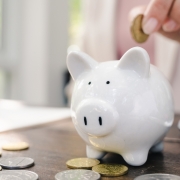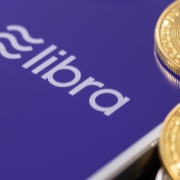Economics For Individuals: Save Like A Pessimist, Invest Like An Optimist.
In 1984 Jane Pauley interviewed 28-year-old Bill Gates. “Some people call you a genius,” Pauley said. “I know that might embarrass you but …”
Gates deadpans. No emotion. No response.
“OK, I guess that doesn’t embarrass you,” Pauley says with an awkward laugh.
Again, zero reaction from Gates.
Of course he was a genius. And he knew it.
Gates dropped out of college at 19 because he thought a computer should be on every desk in every home. You only do that when you have relentless confidence in your abilities. Paul Allen once wrote about the first time he met Bill:
You could tell three things about Bill Gates pretty quickly. He was really smart. He was really competitive; he wanted to show you how smart he was. And he was really, really persistent.
But there was another side of Bill Gates. It was almost paranoia, virtually the opposite of his unshakable confidence.
From the day he started Microsoft he insisted on always having enough cash in the bank to keep the company alive for 12 months with no revenue coming in. In 1995 he was asked by Charlie Rose why he kept so much cash on hand. Things change so fast in technology that next year’s business wasn’t guaranteed, he said, “Including Microsoft’s.” In 2007 he reflected:
I was always worried because people who worked for me were older than me and had kids, and I always thought, ‘What if we don’t get paid, will I be able to meet the payroll?’”
Optimism and pessimism can coexist. If you look hard enough you’ll see them next to each other in virtually every successful company and successful career. They seem like opposites, but they work together to keep everything in balance.
What Gates seems to get is that you can only be an optimist in the long run if you’re pessimistic enough to survive the short run.
The best way for most people to apply that is: Save like a pessimist, invest like an optimist.
Let me try to convince you of each.
SAVE LIKE A PESSIMIST
John Littlewood was a mathematician who sought to debunk the idea of miracles being anything more than simple statistics.
Physicist Freeman Dyson explains:
Littlewood’s law of miracles states that in the course of any normal person’s life, miracles happen at the rate of roughly one per month.
The proof of the law is simple. During the time that we are awake and actively engaged in living our lives, roughly for eight hours each day, we see and hear things happening at a rate of one per second. So the total number of events that happen to us is about 30,000 per day, or about a million per month.
With few exceptions, these events are not miracles because they are insignificant. The chance of a miracle is about one per million events. Therefore we should expect about one miracle to happen, on average, every month.
The idea that incredible things happen because of boring, obvious, statistics is important, because it’s true for terrible things too.
Think about 100-year events. One-hundred-year floods, hurricanes, earthquakes, financial crises, frauds, pandemics, political meltdowns, economic recessions, and so on endlessly. Lots of terrible things can be called “100-year events”.
A 100-year event doesn’t mean it happens every 100 years. It means there’s about a 1% chance of it occurring in any given year. That seems low. But when there are hundreds of different independent 100-year events, what are the odds that any one of them will occur in a given year?
Pretty good, in fact.
If next year there’s a 1% chance of a new disastrous pandemic, a 1% chance of a crippling depression, a 1% chance of a catastrophic flood, a 1% chance of political collapse, and on and on, then the odds that something bad will happen next year – or any year – are … uncomfortably high.
Littlewood’s Law tells us to expect a miracle every month. The flip side is to expect a disaster roughly as often.
Which is what history tells us, isn’t it?
History is “just one damn thing after another” said Arnold Toynbee. Dan Carlin’s book The End is Always Near highlights periods – from pandemics to nuclear war – where it felt like the world was coming to an end. They exist in every era, every continent, every culture. Bad news is the norm.
Even during what we think were prosperous periods, like the 1950s and 1990s, there was a continuous chain of grief. Adjusted for population growth, more Americans lost their jobs during the 1958 recession than did in any single month during the Great Recession of 2008. The global financial system nearly fell apart in 1998, during the greatest prosperity boom we’ve ever seen.
The world breaks about once every ten years, on average. For your country, state, town, or business, once every one to three years is probably more common.
Sometimes it feels like terrible luck, or that bad news has new momentum. More often it’s just Littlewood’s Law at work. A zillion different things can go wrong, so at least one of them is likely to be causing havoc in any given moment.
Save like a pessimist means you acknowledge the cold statistics of how common bad news is. It’s common at the global, national, local, business, and personal level. Save heavily, knowing with certainty that you’ll need a cushion to deal with the next banana peel. Be a little bit paranoid, knowing the assumptions you hold today could break tomorrow, and you’ll need enough room for error to make it to the next round.
INVEST LIKE AN OPTIMIST
More people and businesses try to solve problems than fudge success or get into trouble. Not by much. But the odds tilt ever so slightly toward long-term progress amid frequent setback. It’s been happening for thousands of years: millions of people solving one problem and moving on to the next, bit by bit, experiment by experiment.
Since progress is cumulative (we don’t forget past innovations) but setbacks are temporary (we rebuild), the long-term odds tilt towards growth.
And that’s all it takes.
In blackjack, casinos usually have a 0.5% edge over players, which is enough to guarantee they’ll win over time. The best card-counters give themselves about a 2% edge over the house, which is enough to ensure they’ll win over time.
Same thing in the economy.
As long as more people try to get better than screw up, the long-term odds are in an economy’s favor. And that’s virtually always the case because the screw-ups – the declines, the recessions, and panics, the wars – fuel the problem-solving.
Once the odds are in your favor, compounding takes hold. And then …. boom.
Compounding is easy to underestimate because it’s not intuitive, even for smart people. Michael Batnick once explained it. If I ask you to calculate 8+8+8+8+8+8+8+8+8 in your head, you can do it in a few seconds (it’s 72). If I ask you to calculate 8x8x8x8x8x8x8x8x8, your head will explode (it’s 134,217,728).
If the odds are in your favor and you can keep them in your favor for a long time, you shouldn’t just be an optimist. You should be a ridiculous, full-blown, giddy optimistic.
Which is also what history tells us, isn’t it?
All good investing comes down to surviving an inevitable chain of short-term setbacks and disappointments in order to enjoy long-term progress and compounding.
Save like a pessimist, investing like an optimist.
Check out Morgan Housel’s book, The Psychology of Money.











